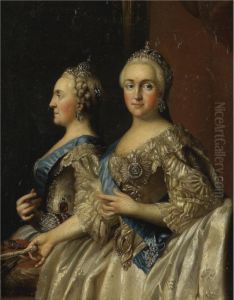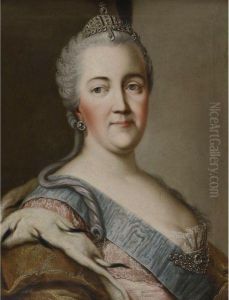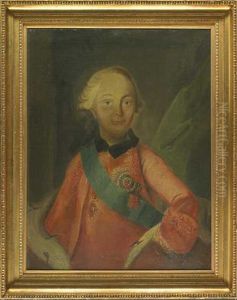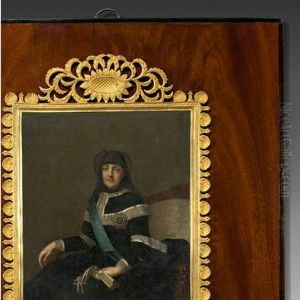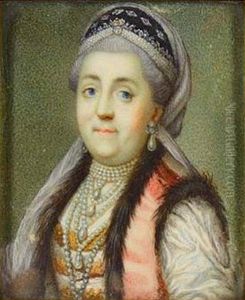Vigilius Eriksen Paintings
Vigilius Eriksen was a Danish portrait painter who became prominent in the 18th century. Born in Copenhagen in 1722, Eriksen is best known for his portraits of royalty and nobility, particularly his works depicting members of the Danish and Russian imperial families.
Eriksen began his artistic training in his hometown, but his talent soon took him beyond the borders of Denmark. He traveled to Paris to study under the tutelage of French painter Louis Tocqué, who was a well-known portraitist of his time. The experience in France significantly influenced Eriksen's style, as he absorbed the prevailing Rococo tastes and the grand manner of portraiture.
In the 1750s, Eriksen's career took a decisive turn when he was called to Russia by the invitation of Tsarina Elizabeth. She was impressed by his skills and commissioned Eriksen to become a court painter. During his time in Russia, he painted numerous portraits of the Tsarina and other members of the royal family, including the future Catherine the Great. His portraits were characterized by their elegance, attention to detail, and the ability to capture the opulence and power of his subjects.
Eriksen's work soon garnered acclaim, and he became a sought-after portraitist among the European elite. His portraits were celebrated for their vivid realism and sophisticated portrayal of fabrics and materials, a testament to his meticulous technique.
After a successful career in Russia, Eriksen returned to Denmark, where he continued to paint portraits of the Danish royal family and other high-ranking officials. He remained an influential figure in Danish art until his death in 1782. While not as widely known today as some of his contemporaries, Eriksen's contributions to portrait painting have been recognized by art historians, and his works are held in several European art museums, serving as valuable examples of 18th-century portraiture.
